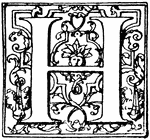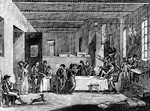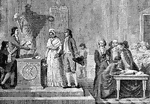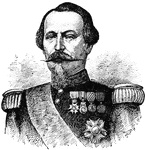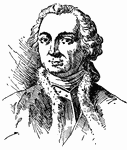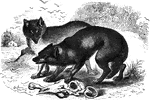
French Wolves
"The common wolf is of the size of a large dog; its usual color is a yelowish gray: the hair strong…

Battle of Gaines's Mill
"Battle of Gaines's Mill, Friday, June 27th, 1862. At eleven o'clock each division, brigade, regiment…

Mortar Practice - Rear View
"Mortar practice- rear view of 13-inch mortar, with its usual complement of seven gunners. The mortar…
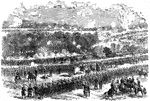
Battle of Malvern Hill
"Battle of Malvern Hill, near Turkey Bend, James River, Va., fought Tuesday, July 1st, 1862. The battle…
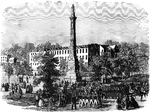
Pulaski Monument
"Review of Confederate troops on their march to Virginia, in front of the Pulaski Monument, Monument…

Oven
"'Fresh Bread!'- Impromptu oven built by the Nineteenth Regiment, New York Volunteers, in General Banks's…
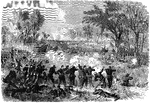
Battle of Chancellorsville
"Battle of Chancellorsville, Sunday, May 3rd, 1863. General Hooker repulsing the attack of the enemy.…

General Daniel Tyler
"General Tyler, born in Brooklyn, Windham County, Conn., January 7th, 1797, died in New York city, November…
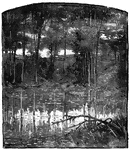
Bloody Pond
"Bloody Pond, near Lake George, which is said to still contain the bones of many of those who fell in…
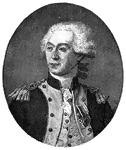
Marquis de Lafeyette
"Marquis de Lafayette, Frenchman who fought during the American Revolution."—E. Benjamin Andrews,…
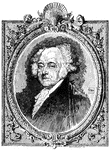
John Adams
"John Adams, a once proud reservist, was popular, and anti-French feeling irresistible."—E. Benjamin…
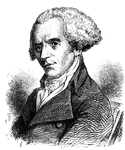
Elbridge Gerry
"Elbridge Gerry was despatched as a last overture for peace with France."—E. Benjamin Andrews,…
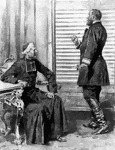
Maximilian
"Maximilian watching the departure of the last French troops from the City of Mexico."—E. Benjamin…
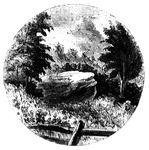
William's Rock
William's Rock. This view is taken from the road, looking northward. In the distance is seen the highest…
Long Point
Long Point and vicinity. This little sketch was taken from the steam-boat , near the south end of Long…

Sabbath Day Point
Sabbath Day Point. It is between three and four miles from the little village of Hague, in the midst…

Representation of 1775
Virtual representation, 1775. 1. One String Jack, Deliver your property. 2. Begar, just so in France.…

Beloeil Mountain
Beloeil Mountain, this sketch is taken from the southeast angle of old Fort chambly, showing the rapids…
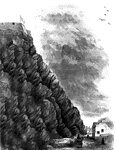
Cape Diamond
Cape Diamond, this is a view of the spot where Montgomery was killed. The cliff is Cape Diamond, crowned…

Dining-Hall
"The dining-hall, or room with seven doors. In the December number of the New York Mirror for 1834,…
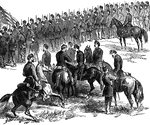
Battle of Malvern Hill
"Battle of Malvern Hill, near Turkey Bend, James River, Va., fought Tuesday, July 1st, 1862. The battle…

Battle of Malvern Hill
"Battle of Malvern Hill, near Turkey Bend, James River, Va., fought Tuesday, July 1st, 1862. The battle…
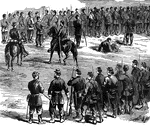
Battle of Malvern Hill
"Battle of Malvern Hill, near Turkey Bend, James River, Va., fought Tuesday, July 1st, 1862. The battle…

Battle of Malvern Hill
"Battle of Malvern Hill, near Turkey Bend, James River, Va., fought Tuesday, July 1st, 1862. The battle…
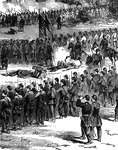
Battle of Malvern Hill
"Battle of Malvern Hill, near Turkey Bend, James River, Va., fought Tuesday, July 1st, 1862. The battle…

Battle of Chancellorsville
"Battle of Chancellorsville, Sunday, May 3rd, 1863. General Hooker repulsing the attack of the enemy.…
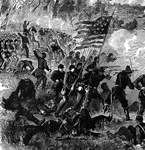
Battle of Chancellorsville
"Battle of Chancellorsville, Sunday, May 3rd, 1863. General Hooker repulsing the attack of the enemy.…
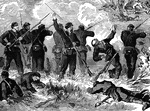
Battle of Chancellorsville
"Battle of Chancellorsville, Sunday, May 3rd, 1863. General Hooker repulsing the attack of the enemy.…

Bastile Key
"Key of the Bastile. This key of the old Paris prison known as the Bastile, was sent by La Fayette to…
!["View of the remains of the French Works. These remains are in the southeastern suburbs of the city, about half way between the [African American] Cemetary and the residence of Major William Bowen, seen toward the right of the picture. The banks have an average height, from the bottom of the ditch, of about five feet, and are dotted with pines and chincapins or dwarf chestnuts, the former draped with moss. The ground is an open common, and although it was mid-winter when I was there, it was covered with green grass, bespangled with myriads of little flowers of stellar form. This view is from the direction of the town looking southeast."—Lossing, 1851](https://etc.usf.edu/clipart/14100/14147/french-works_14147_mth.gif)
French Works
"View of the remains of the French Works. These remains are in the southeastern suburbs of the city,…
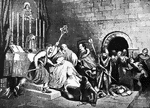
Death of Becket
"Death of Becket. During the early years of the reign Thomas A. Becket, as the king's chancellor, had…
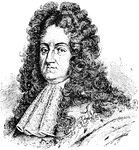
Louis XIV
"The age of Louis XIV. during the reign of Louis XIV, the son and successor of Louis XIII (1643-1715),…

Absinthium
"The common wormwood; a European species, much cultivated for its bitter qualities; it contains a volatile…
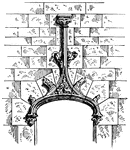
Accolade
"An ornament composed of two ogee curves meeting in the middle, each concave toward its outer extremity…
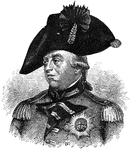
George III, King of England
"George III (1760-1815). The first two Hanoverian kings were ignorant of English politics and obliged…
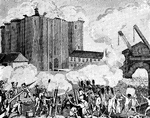
Bastile
"The taking of the Bastile, July 14, 1789. The Parisian mob, not satisfied with the formation of the…
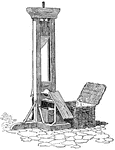
Guillotine
"The guillotine was used during the Reign of Terror of the French Revolution. Now that the power of…

Napoleon
"France under Napoleon. The consulate was the form of government established after the overthrow of…

Trafalgar Monument
"Trafalgar Monument, Battle of Trafalgar (1805). During the early part of the Napoleonic wars, England's…
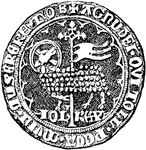
Agnel
"Agnel of John II., King of France. Agnel- A French gold coin bearing a figure of the paschal lamb,…
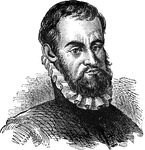
Pedro Menéndez de Avilés
Pedro Menéndez de Avilés, a Spanish soldier who landed at and named St. Augustine and attacked the…
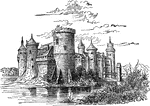
Castle
"A Castle is a building constructed for the purpose of repelling attack. The castella left by the Romans…
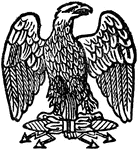
French Eagle
"The Eagle is an emblem in heraldry, war, and legend. The eagle, borne upon a spear, was used by the…

17th Century French Fan
"A Fan is an instrument used by ladies to agitate the air, and cool the face, in warm weather; hence,…

Gopher
"Gopher is a name given by the early French settlers in the United States to various animals which honeycomb…
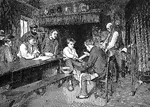
Doctor
"This striking picture, by a celebrated French artist, has excited marked attention ever since it was…
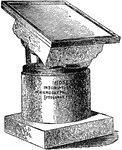
Rosetta Stone
"Rosetta Stone is the name given to a stone found near the Rosetta mouth of the Nile by a French engineer…

Chaise
The front of a French gold coin first issued by Louis IX. in the thirteenth century. It was equal to…

Chaise
The rear of a French gold coin first issued by Louis IX. in the thirteenth century. It was equal to…
